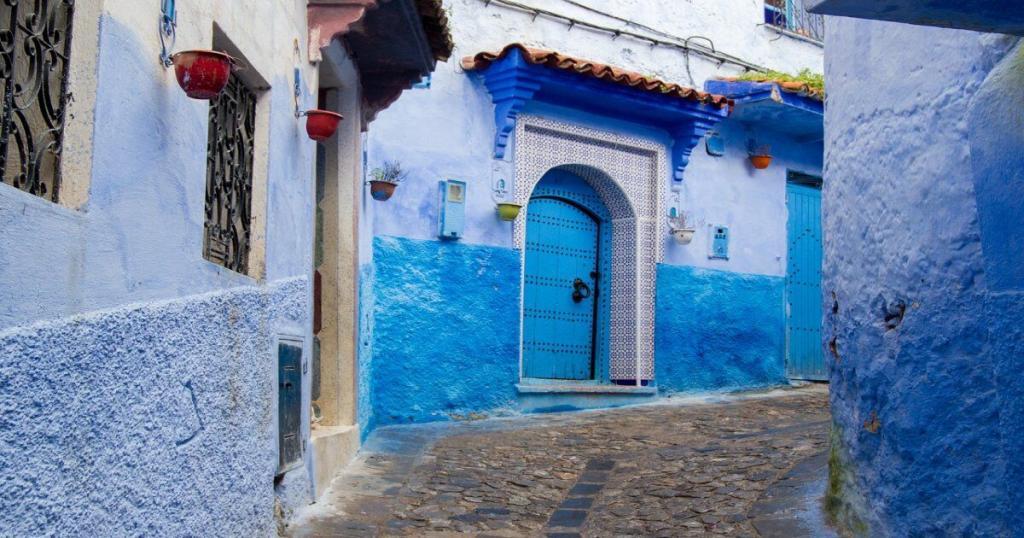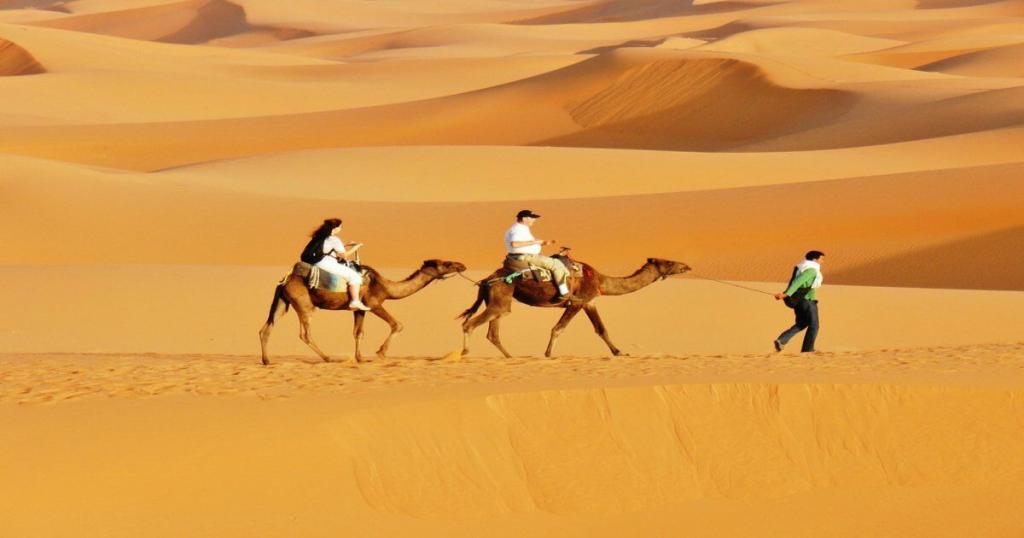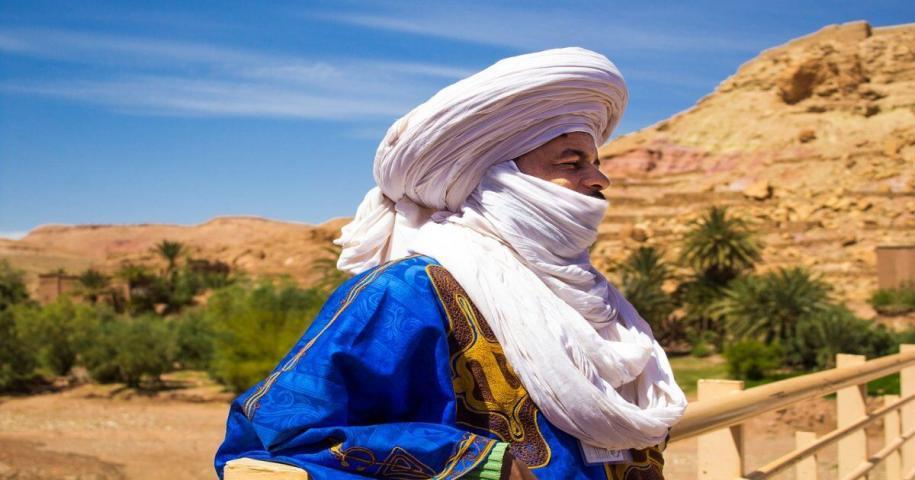Morocco is a country full and rich in colors, painting, and natural ones. From Desert to mountains, Atlantic to Mediterranean coasts, Arabs and Berbers. Incredible cinematic views of nature and narrow streets of ancient cities to hammams and beaches. From couscous and spices to mint tea and coffee with cardamom and anise. Not to mention, bustling markets and fishing villages with gulls.
Morocco has developed under the influence of Berber, Arab and European cultures, and today plays the role of a very attractive destination for travelers. Because here, you can relax on the endlessly beautiful coast, go hiking to the mountains, and ride through the desert on a camel or off-road. Also, wander through ancient cities, and explore the many museums. And of course, take gigabytes of great pictures, characterized by incredibly beautiful bright colors that have colored these places.
These are the colors of Morocco, the amazing kingdom, over which the artist god has generously sprinkled a palette of bright colors with his brush. Clearly, absolute heaven waiting for your visit! To discover the beauty of Morocco, you need to travel with locals that show you what the real Morocco is. For this reason, Touring In Morocco is there to assist and guide you throughout the country.
Red Colors of Morocco
Red color is everywhere in Morocco: mountains, canyons and precipitous ocean shores. In the vast expanses where the waves of the Atlantic Ocean rest against bright red cliffs and endless beaches. There is a special place, Legzira. Here, nature has created amazing arches washed by the ocean waves into the claystone rock.
Huge orange-red arches rise above the mile-long beach, reflecting in the puddles and on the wet sand. It is the perfect place to walk and contemplate the splendor of nature, which for centuries has created a fantastic landscape while destroying the fruits of her work – as if tired of watching people come to this beach to marvel at her work of art. The arches are gradually collapsing, you need to catch this miracle of nature in time.
Bright red is the southern foothills of the High Atlas. A sun-scorched and desert windswept rocky terrain where you feel like Mark Watney stranded on Mars. All around are red slopes and rocks, from small gravel to boulders taller than human height.
The Fortress of Ait Benhaddou
In the midst of the Martian landscape, the fortress of Ait-Ben-Haddou stands. Looking out with its blind eyes on red clay towers at the surrounding expanse. The Ksar Ait-Ben-Haddou is what remains of a fortified city built in the 11th century in a valley on the left bank of the Ouarzazate River. Hundreds of years ago the caravan route from Tombouctou to Marrakech passed here. The fortress guarded traders, camels replenished water and food in their humps, and people returned to civilized life after long journeys through mountains and desert.
Today it is a UNESCO monument, but if you squint your eyes for a moment and forget about the carpet and shawl merchants – the modern inhabitants of Ait-Ben-Haddu, it seems that in the distance the bells of the caravan have rung. And the doors to the huge fortress are about to open. Besides the shouting voices of merchants who came here from the hot embrace of the desert rustle.

Terracotta
Terracotta is the color of the earth, a deep burgundy turning to brown. The mountains of this color are located in the deep Gorges du Dades, near the town of Ouarzazate. Here, a small river flows out of the High Atlas Mountains, along which the Dades Gorge is formed, the walls of which are up to half a kilometer high.
In the wide part of the gorge are small villages built of clay rocks of bright Moroccan terracotta color. The buildings merge with the mountains, and only the bright green of the trees and palms contrasts with the burgundy-brown houses and mosques.
An amazingly beautiful place, the red jewel of Morocco, which is a must-see.
Blue colors of Morocco
The blue pearl, Chefchaouen
Blue in Morocco is a symbol of protection against evil spirits. The color is ubiquitous in the Maghreb. Shutters and doors painted in various shades of blue contrast brightly with the white walls, blue clothing stands out against the lifeless desert.
Morocco is home to the bluest city on earth, Chefchaouen or Chaouen. The city’s history begins in the 15th century when Emir Moula Ali Ben-Moussa Ben Rachid El Alami founded the first mosque and a mighty fortress in the mountains on the site of a small Berber village to protect it from Portuguese invaders. But blue appeared in Chaouen after the exodus of Andalusian Jews from Spain, who found refuge in Morocco, in the small fortress of Chefchaouen. According to biblical precepts, the blue and blue colors symbolize the prayer shroud Talit (tales) and remind the Jews of God.
There are no longer any Jews left in modern-day Chefchaouen, but the locals continue to paint the walls in cobalt.
In this city, you feel as if you are in a parallel reality. There are no other colors besides blue. Although, there are still bright brick roofs covered in the Andalusian tradition of shingles, green mountains overhanging the valley, and pink sunsets escorted by tourists from the neighboring hill, waiting for the first lights to come on over the blue of Chaouen.

Essaouira Magador
Essaouira is a city of blue boats and doors, artists, and musicians. As well as, relaxed sunsets overlooking the fort and delicious seafood. The name Essaouira translates from Arabic as “beautiful view,” and it is indeed beautiful in its colonial desolation. It’s nice here to say goodbye to the sun while sitting on the roof of the riad, sipping tart mint tea.
To come to the fish market for the evening catch, hiding your nose from the smells in a handkerchief. To listen to street musicians on the square and sit on rocks cut by the tide. Besides watching seagulls scurry over a white city whose walls have been coursing in the waves of the ocean for hundreds of years.
Essaouira was once a great slave market. Hardy slaves were brought here from the depths of Africa to be transported by ship to the New World. In the ’60s Essaouira was a haven for hippies. Jimmy Hendrix used to sit on the parapet smoking weed and fending off cheeky seagulls.
Today there are crowds of tourists and photographers. Rock music blares from the bars in the evenings, and in the morning’s skinny cats stroll along the narrow streets. Along the blue doors leading to beautiful riads and oases hidden behind the high walls of houses.
Blue and Touareg people
Blue is the traditional color of Tuareg clothing in Morocco. The famous Tuareg turban for men. The Tagelmust can still be seen on camel jockeys and Berber villagers. The Tuaregs are often called “Blue Men” because of their attachment to the indigo color.
According to local belief, this headdress protects against “the evil eye and evil spirits. Men may not show their faces in public without the Tagelmust, and only at meals is allowed to lower it to the chin. When a young man turns 18, his family arranges a party and gives him a Tagelmust, after which he is not allowed to appear in public without it.
Today, the Tuaregs wear blue turbans most often on holidays or for the entertainment of tourists. And in everyday life clothes can be of any other color. However, to the untutored eye, it is nice to see a bright blue figure leading a tourist camel caravan, which emerges from behind the dunes as from a yellow sea of sand.
Yellow and orange colors of Morocco
The yellow color in Morocco can be tasted. Moroccan oranges are sold on every corner and are consumed here in liquid form. A glass of juice for breakfast will invariably be waiting for you in the hotel. On every corner, vendors will invite you for a glass of Fraiche. Given the cost of 1 euro is simply impossible to resist such a pleasure. Especially if you are very thirsty in the desert.
Morocco has its own piece of the yellow sands of the Sahara. And if in neighboring Algeria it is an endless expanse of dunes, Morocco got a small offshoot. Erg Shebbi, which resembles a huge sandbox in the middle of a sun-scorched flat stony desert.

Huge yellow dunes, a hundred and fifty meters high, as if yellow mountains rise from the horizon. You can’t believe your eyes when you first approach the desert. Sunset colors the yellow sand in amazing shades, from bright orange to gently pink.
When the shadows from the dunes become longer, one has the feeling that the artist painted a picture with sharp strokes, and the people and camels just added to it, creating a perfect composition.
Green: Oases, forests, and mountains
In Morocco, all colors are deliberately bright – contrasts await at every turn of the road. It is a mistake to think that yellow and red prevail because of the hot climate and mountains.
Morocco is a green and surprisingly fertile country. If you go from the desert to Fes, the landscapes change with every hundred kilometers along the way. The mountains become greener and less lifeless.
The huge canyon that stretches along the river Ziz is also a kilometer. Long oasis overgrown with date palms. Not to mention Ksar Lamaarka, a settlement inside the palm oasis, looks like an emerald river among lifeless yellow cliffs from the observation deck.
Further down the road are high-mountain flood meadows, literally strewn with dots of thousands of rams. And beyond them grow cedar forests dominated by Moroccan macaws. The green mountains change shades from emerald to dark bottle-green. Definitely, it’s hard to imagine that a few hours ago there was only a sun-scorched desert around.
At the end of the road opens and swirls in a vortex of bright colors noisy, diverse Fes. And only after climbing to the observation deck overlooking the colorful vats in the tanneries. It becomes clear where God got so many colors to paint this amazing and unique kingdom of Morocco.


Leave a Reply